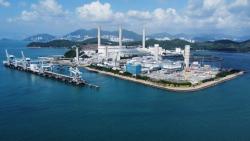
OR WAIT null SECS
© 2024 MJH Life Sciences™ and Turbomachinery Magazine. All rights reserved.
Reducing steam turbine costs while increasing efficiency
For as long as steam turbines have existed, there have been two major trends for drivers in steam turbine development and innovation: achieving higher efficiency and ensuring longer life span and reliability. In the recent decades, several additional drivers have come into play and have become increasingly important contributors in determining steam turbine and power plant configurations. These factors include climate change concerns, cost pressure and shorter delivery time, which are quite typical manifestations of the intensifying competitive pressure within the industry.
Typical double flow design options
Considering the aspects of reducing the cost of steam turbines, the typical LP turbine double flow design offers some options to reduce weight and axial length. The most common options for typical double flow LP turbine flowpath axial length reduction are nozzles and blades with less axial width, inter stage axial distance reduction, and more aggressive and shorter exhaust diffuser. In many cases, the above mentioned options are considered assuming that we have to sacrifice design requirements from an efficiency point of view, in favor of axial length/weight reduction.
At the same time, for a typical double flow LP turbine structure a great potential exists to significantly cut axial length without affecting efficiency. The turbine inlet compartment, located in the center of the turbine, occupies a great deal of axial and radial space in the present typical double flow arrangement, serving only to redistribute and to direct or supply the steam to the first stage while not contributing to useful work production.
Conversely, these portions of the turbine could be utilized to produce useful work by installing a radial inward stage. The Inlet compartment configuration perfectly fits with the radial stage arrangement. Installed within the inlet portion of an LP turbine, the radial stage could replace one or two of the first axial stages, thus reducing the axial length of the overall flowpath. However, this idea is not novel.
Early attempts
More than 30 years ago, attempts were made by Dr. M.E. Deitch from Moscow Power Engineering University to incorporate a radial stage into axial LP double flow turbine. The evaluation has been done with regard to efficiency and mechanical design based on 200 MW fossil steam turbine. The conclusions from that study were very optimistic with regard to efficiency, which was equal or even higher than that of two first axial stages, with axial length shortening by 13-17% and significant weight and cost reduction.
Nowadays, there is a lot of competitive market pressure to cut steam turbine costs. Probably it is the right moment to reconsider this old idea and return to radial stage as an effective solution to reduce turbine axial length without sacrificing efficiency. New design capabilities, based on 3D CFD and FEA structural analysis, may open a new page in the LP Turbine redesign with radial stage approach.



